While many filmmakers and fans might envy director Mike Dougherty on being handed the reins on Godzilla and “frenemies” for the upcoming Godzilla: King of Monsters, it’s must be just as daunting knowing that you’re facing sixty years of a fandom that is very specific on what they like… and what they don’t.
Yes, Godzilla is indeed back in this direct sequel to the 2014 movie, but this time, he’s joined by a world full of monsters — some friends, some foes — including fan-favorites like King Ghidorah, Rodan, Mothra and more.
Amidst this battle of “Titans” (as they’re now called) is the conflict of a family that’s been divided by tragedy. Vera Farmiga’s Dr. Emma Russell works for MONARCH, the corporation trying to keep track and even control those Titans, with her daughter Madison (Millie Bobby Brown from Stranger Things) alongside her. Madison’s estranged father, played by Kyle Chandler, ends up being brought in to help when mercenary Alan Jonah (Charles Dance) shows up with his own intentions for the device Dr. Russell has invented to communicate with the Titans.
Godzilla: King of the Monsters is Dougherty’s third movie as a director and his first since 2015’s Krampus, a much smaller-scale creature feature that was far more comedic than the apocalyptic implications that Jonah wants to bring the world with the arrival of King Ghidorah, the three-headed “Monster Zero.”
The Beat spoke with Dougherty over the phone a few weeks back, and yes, I even snuck in a question about Dougherty’s directorial debut Trick ‘r’ Treat and the chances of seeing more Halloween-inspired horror stories.
THE BEAT: I know you’re a life-long fan of Godzilla like many of us who were kids. What did it take to convince Legendary that you were the right director to play in the Godzilla sandbox after making Krampus with the studio?
Mike Dougherty: Well, I feel like we both sort of flirted with the idea. They asked me shortly after I finished Krampus and I was taking a break whether I had any interest because they knew that Gareth [Edwards] was still finishing [Rogue One] and I quickly said, “Yes.” Godzilla’s been a friend of mine for decades, so the idea of getting to do a Godzilla film was like a wish come true. From there, it was just a natural evolution of sort of coming up with the rough deets, the general themes of the story, and Legendary just continued to support me every single step of the way. It was a wonderful partnership and collaboration, and it just kept growing. The development of this film was a really enjoyable part of the process because I was given so much support and freedom, but also honest, constructive criticism.
THE BEAT: You’ve written quite a few big movies, mainly for Bryan Singer, so when you’re writing for yourself to direct, are you constantly thinking about how you can do certain things, since some of the scenes are fairly complex?
Dougherty: I feel like it’s a joint effort. I feel like there’s a joy in working on both the scripts and the directing side of things. I think a lot of screenwriters get frustrated that what they intended for a script, what they wrote into a screenplay didn’t get translated well when it ended up on screen. It got completely lost. Maybe because the director didn’t understand some of the nuances or subtlety that the writer intended. And when you’re wearing both hats, you don’t have that problem. It’s both a blessing and a curse to be the writer and director, because I think when you’re doing both you also feel more pressure. You feel more protective over the project. It truly is your baby. But the blessing of it is that, yes, you have a greater say in making sure that what you wrote, whether it be a character’s arc, a piece of dialogue, or certain themes, you have more control over ultimately what ends up on screen.
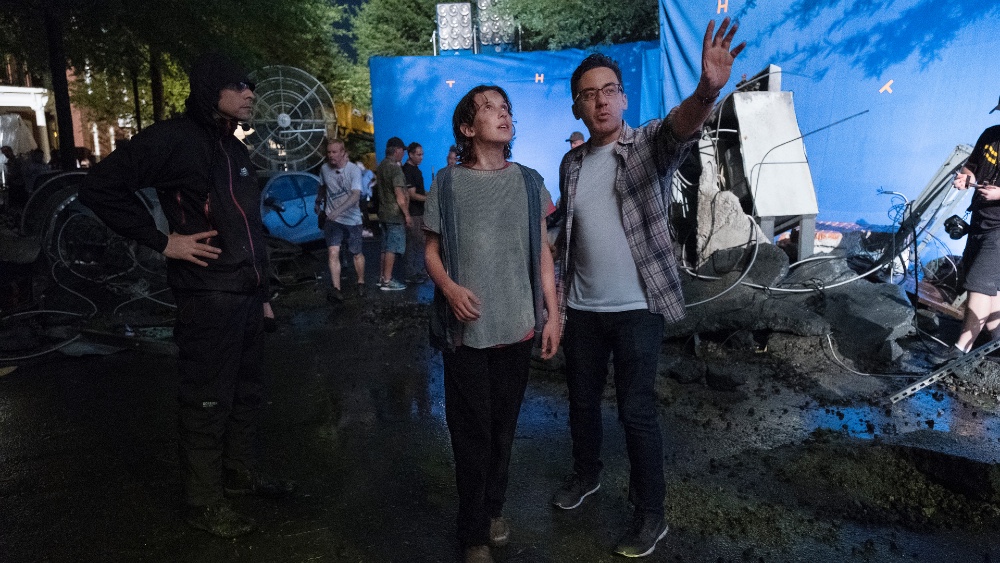
THE BEAT: Legendary had been teasing Rodan and Mothra and Ghidorah since Comic-Con the year Godzilla came out. How do you go about developing the new versions of these monsters when the originals were mainly men in costumes that gave them a certain cheesiness people loved. You also have to put them in the modern world and keep them menacing, so how do you go about redesigning them?
Dougherty: Thankfully, the work that Gareth [Edwards] did in the previous chapter was so great. I feel like he was the one that really broke the mold as far as creating a modern-day Godzilla movie is concerned, because he treated the character and his legacy with so much respect and care and attention and made it feel real. What I love about his film is that it feels like something that could happen if you looked outside your window. Even Godzilla’s design feels very real — it feels like something born out of Mother Nature. The scales, the texture, the color palate, the way he moved, just very, very real and visceral. I feel like I was building upon what was already there, and then Jordan [Vogt-Roberts] carried that even further with Skull Island. As much as he brought in a pop vibrancy to his shots and his color palate, he still kept the very grounded, realistic portrayal of the creature of Kong. It was now up to me to sort of push things even further.
What I tried to do is to take the grounded, visceral realism of what Gareth had done, and the vibrancy and color of Skull Islandand sort of intertwine them in this movie, push things almost into more of a science/fantasy realm, whereas Gareth’s film and I think Jordan’s film were more science fiction. When you bring in a three-headed dragon and a giant moth, you have to be willing to embrace a more fantastical palate. You have to keep one foot in the realism, but you have to be willing to sort of stretch into a much more fantastical tone. I think that’s what helps this film stand apart but also with and side-by-side with the previous chapters.
THE BEAT: You do tease the Mothra Girls a little as well as Monster Zero’s alien background, but you didn’t have a Monster Island. Did having Skull Island make doing Monster Island a little redundant or did that just not fit in the different take that was created for the monsters?
Dougherty: I feel like there’s only so many Easter eggs and references you can pack into a movie before it gets ridiculous. As a kid, I loved the concept of Monster Island, but that’s such a big thing, the idea of basically an island where you keep the creatures prisoner. It seems like it would be better served in the potentially future installment.
THE BEAT: I’m pretty good at telling when I’m watching a movie what is sets, what is CG and what is done on a sound stage – maybe because I’ve been to so many sets. With this movie, I couldn’t really tell, which I guess is a good thing. Did you try to shoot on a lot of locations and then punch them up with CG?
Dougherty: We were mostly on stages in Atlanta. We had two days of location shoots at a ranch in Atlanta that stood in for Colorado, but that was a really easy digital set extension, digital map painting to add to the Rockies in the background. Then we had two days of second unit in Mexico City. Other than that, Atlanta stood in for China and Antarctica and a whole slew of other places. The technology is just jaw-dropping these days. You can shoot anything, anywhere and make it look like anything, anywhere. You know what I mean?
THE BEAT: I actually spoke to O’Shea [Jackson] a few weeks back for Long Shot, and he was telling me about interacting with the monsters that weren’t there. Did they have anything to work with, like pre-vis?
Dougherty: I really loved pulling the actors into my head, as scary of a place that that can be. And so I used concept art, creature designs, previs animation, anything I could do to sort of program the actor’s subconscious mind with the images of these beasts so that when they were staring up at a laser pointer or a tennis ball on a stick, that subconsciously they knew that they were looking up at Mothra or Rodan or King Ghidorah. I often made sure that on set we were playing the roars of the creatures. Sometimes utilizing music to evoke the mood and the tone of the scene. That was a big favorite thing for Millie and Vera to play certain musical cues. Really, any tool you can use just to help the actor’s emotions and reactions sharpen a bit were great. I was actually inspired by a technique that Friedkin used on the set of The Exorcistin that he was known to walk around and shoot off blanks of a gun to keep the actors on edge or to give them a sharp reaction in a particular shot. And I couldn’t get away with carrying a loaded gun on the set for this movie, so I thought, “Well what’s the Godzilla version of that?” The idea of playing the roars as loud as possible became my thing.
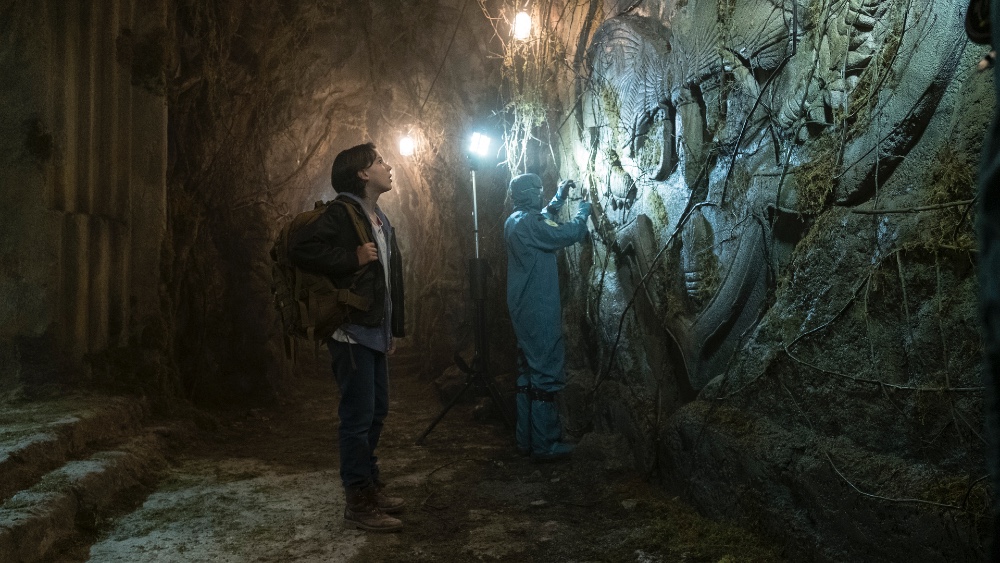
THE BEAT: Did you work with Toho or some of the original creators? Godzilla’s roar is so distinctive, and I’m not sure if that’s something you had access to from Toho’s library or you had to recreate it.
Dougherty: Thankfully, I brought back Ethan and Erik of their company E-Squared, the sound designers from the previous chapter, because I thought they did such a phenomenal job at using the vocalizations of the creatures as a way to really define them as characters. Even the MUTOs felt like living, breathing animals to me. I especially loved the moments where the creatures weren’t roaring and destroying things or clearly just communicating with each other. They felt real. They felt like actual noises, especially sort of like the chirps and the clicks of the creatures. With Godzilla’s monsters — Godzilla, Rodan — all of them have very iconic vocalizations. The roars, the low grumbles, the growls. You could identify those creatures just by their sounds, and that’s the hallmark of a truly iconic creature. That you can close your eyes and listen to them and still identify them, then you know you’ve created an icon. I tried to evolve upon what was done in the classic films, versus reinventing the wheel, because I knew that would be a mistake. They had to sound like themselves. Thankfully, a lot of very dedicated Godzilla fans have taken the time to record all of their vocalizations and upload them to YouTube.
That became a great crash course in history of these creatures and what they sounded like. I would literally just send the links to those YouTube videos to my sound guys and say, “Look, let’s study these. Let’s really dissect these sounds and figure out what makes them distinct.” And they just did such a phenomenal job. I love the roars of the creatures so much I had my sound guys just send them to me so I could listen to them in my car.
THE BEAT: I remember when I first saw the King Ghidorah sequence at CinemaCon and I heard his crackling sound, which I couldn’t even begin to try and imitate, and getting goosebumps.
Dougherty: I call it a “trill.”
THE BEAT: That’s a great term, and that’s a creature I loved so much as a kid so it was finally great to see him on the big screen.
Dougherty: It’s a very unnerving sound. As a kid it really sticks out, it’s almost like fingernails on a chalkboard. It’s such a specific frequency. To me, it’s because he almost sounds like cackling, like laughter.
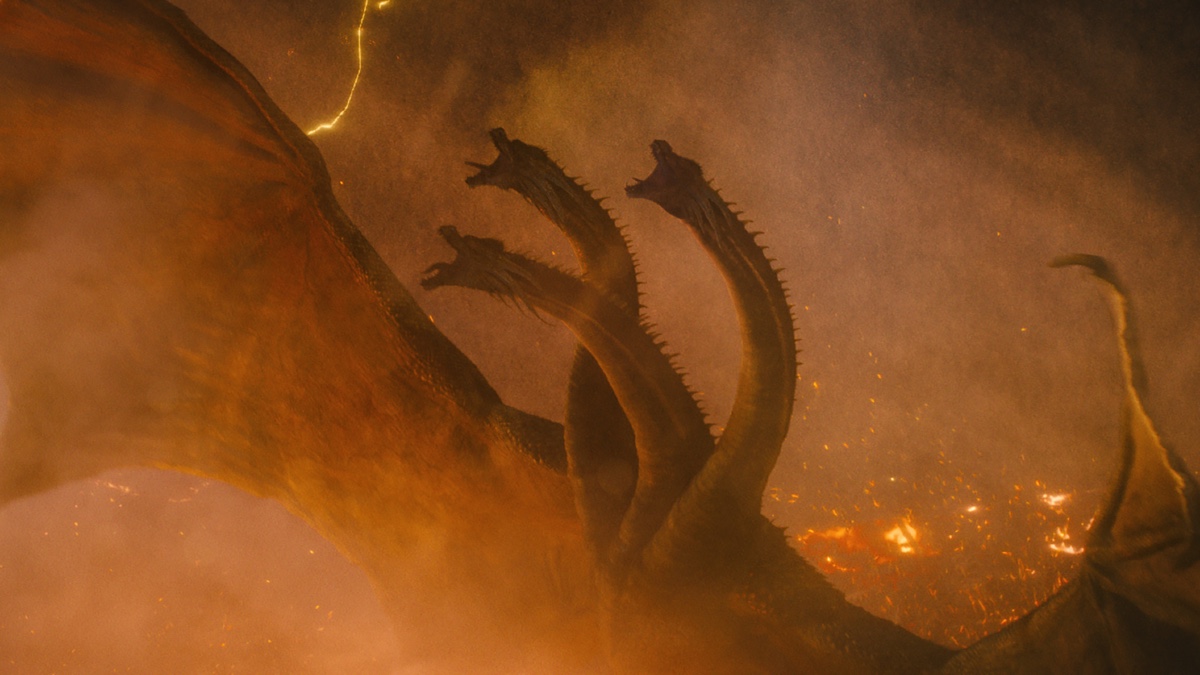
THE BEAT: I know Adam Wingard is working on his Godzilla vs. Kong movie, which you also co-wrote, finishing it concurrently for next year. Kong is mentioned a few times in Godzilla but you didn’t really tease that movie even though it will feature some of the same characters. Was that your decision to not have a more overt tease for that movie since that is so common these days.
Dougherty: It wasn’t a mandate from the company by any means. I just love doing that stuff. I feel like, if you grew up in the ‘80s, you have almost like an inherent love of franchise movies and cinematic universes, because we grew up with them. We grew up with multiple Star Trek and Star Wars films. I love it when sequels sort of lay track for the next potential chapters; I think that’s why people have really embraced the Marvel cinematic universe so much. You definitely feel like you’re getting chapters in a much bigger story. The original Godzilla films were the original cinematic universe, if you don’t include some of the Universal black and white monster movies, which I think were sort of an early prototype. The Toho monster movies were definitely a defining cinematic universe. In a lot of ways, it felt like we’re just kind of coming home, and we’re picking up where Toho left off. It made sense to sprinkle in some Easter eggs about Kong and really indicate that as big as this movie is, it could still get bigger.
THE BEAT: I do want to ask about Trick ‘r’ Treat, which has developed an amazing cult following even though it never got a proper theatrical release. Has there ever been talk about doing another anthology or doing more with that idea?
Dougherty: With Legendary, we did do another comic book anthology a few years ago. That was a lot of fun to revisit that universe and Sam, cause he’s my original baby. I would love to do another one. That ball is definitely in Legendary’s corner. I love the idea of going back and doing something smaller after finishing such a behemoth with this film, but we’ll see, we’ll see. I would love to go back to where it all started for me personally.
Godzilla: King of the Monsters opens this Friday, May 31, with previews Thursday night.
Check back tomorrow for my Box Office Preview on how it might fare.


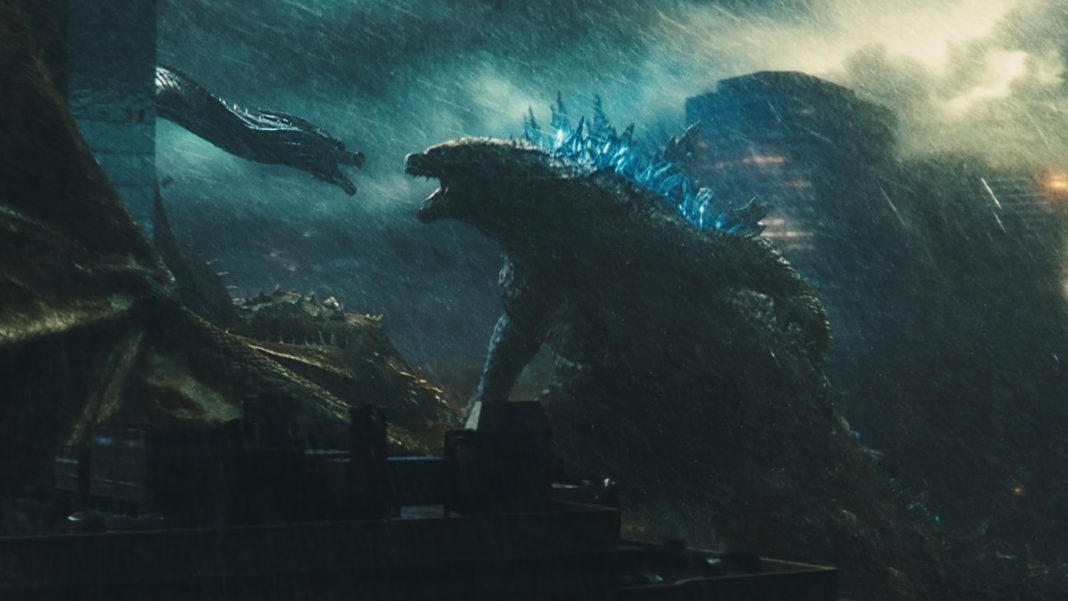
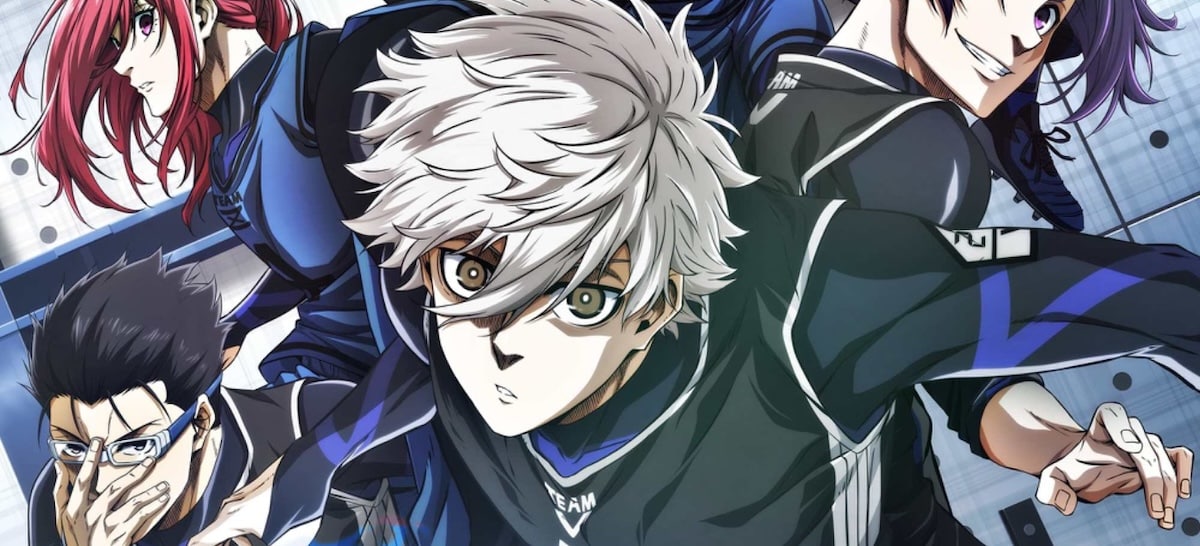




I’d rather see a wide theatrical release for 2016’s SHIN GODZILLA.
Comments are closed.